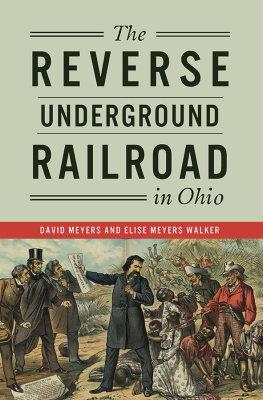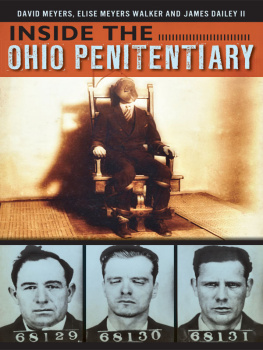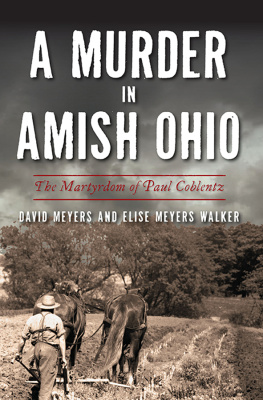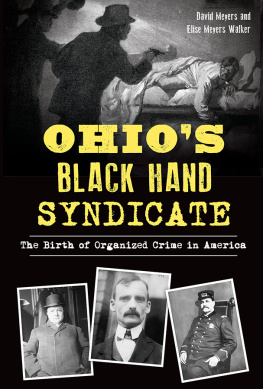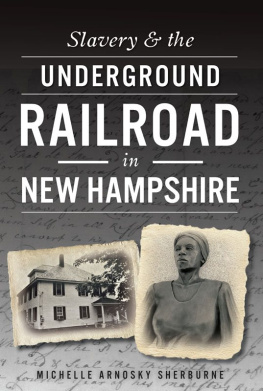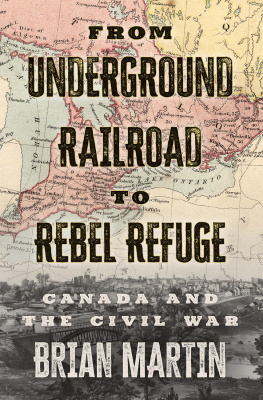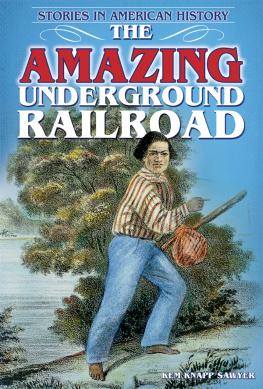
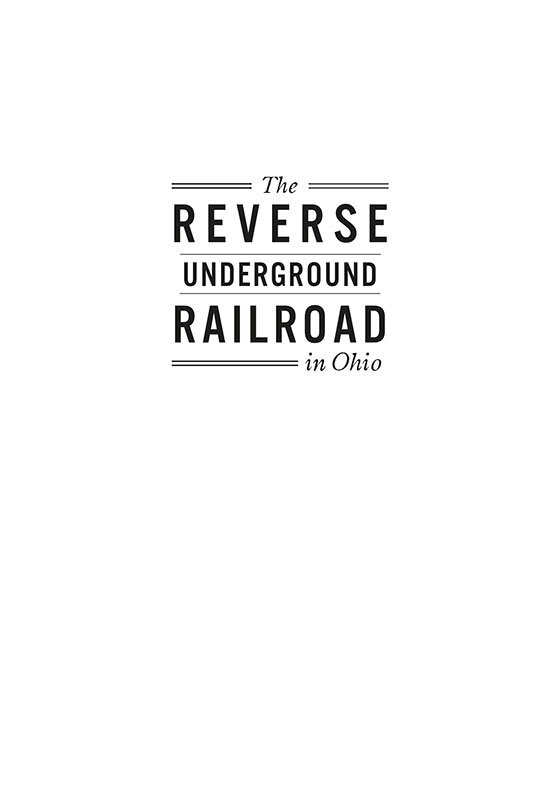

Published by The History Press
Charleston, SC
www.historypress.com
Copyright 2022 by David Meyers and Elise Meyers Walker
All rights reserved
First published 2022
E-Book edition 2022
ISBN 978.1.43967.431.4
Library of Congress Control Number: 2021949179
Print Edition ISBN 978.1.46715.084.2
Notice: The information in this book is true and complete to the best of our knowledge. It is offered without guarantee on the part of the authors or The History Press. The authors and The History Press disclaim all liability in connection with the use of this book.
All rights reserved. No part of this book may be reproduced or transmitted in any form whatsoever without prior written permission from the publisher except in the case of brief quotations embodied in critical articles and reviews.
In memory of historian Henry Howe (18161893), who pointed the way for all of us who have endeavored to follow in his footsteps. To quote Howe: Those who compare the age on which their lot has fallen with a golden age which exists only in their imagination may talk of degeneracy and decay, but no man who is correctly informed as to the past will be disposed to take a morose or desponding view of the present.
CONTENTS
ACKNOWLEDGEMENTS
John Rodrigue and Abigail Fleming, The History Press; Dewey Scott, John Parker House; Liz Schultz, Oberlin Heritage Center; beta readers Randy McNutt and Evelyn Walker; and the Library of Congress, Wikipedia/Nyttend and Ford Walker for use of specific images.
Introduction
THE PAST IN US
Abducting free blacks and selling them back to Southern traders became a cottage industry. Slave catchers either reaped a reward from the slave owner to whom they returned the slave, or pocketed a goodly sumusually far more than the reward from a slave trader to whom they sold any free black they could catch.
Ann Hagedorn, Beyond the River
Slavery existed in North and South America long before there was a United States. Prior to the arrival of Europeans, some Native American tribes were known to enslave their war captives and continued to keep slavesincluding African oneswell into the nineteenth century. Even as the original thirteen colonies were taking shape, slave merchants were already transporting kidnapped Africans to the New World. And illegal transatlantic slave trafficking would continue until about 1870, particularly in Brazil and Cuba.
But the North American slave trade paled in comparison to that taking place nearer the equator. Beginning in the sixteenth and ending in the nineteenth century, the overwhelming majority of African slaves were shipped to Brazil and the Caribbean, according to data analysts Andrew Kahn and Jamelle Bouie. Less than 4 percent of the more than 10 million slaves brought to the Western Hemisphereor 388,747came to North America.
This was dwarfed by the 1.3 million brought to Spanish Central America, the 4 million brought to British, French, Dutch, and Danish holdings in the Caribbean, and the 4.8 million brought to Brazil, they noted. Though this does not absolve the United States of this stain on its history, it does underscore the fact that the newborn country was far from the only transgressor.
Trafficking in African slaves appeared as early as the eighth century when Arab Muslims purchased individuals who had already been enslaved in tribal wars to carry back to the Middle East. From the sixteenth to the nineteenth centuries, the so-called Barbary piratesNorth African Muslimsraided European countries to obtain white captives for ransom or to sell into slavery in Arabia. Miguel de Cervantes, author of Don Quixote, was one of these slaves.
The very word slave is derived from the Latin sclavus, which means slav the ethnic name for those who lived on the west coast of Bosnia on the Adriatic Sea. The slavs were, in fact, the most important source of slaves for the Muslim world during the eighth and ninth centuries. But it didnt begin then. Slavery dates back to at least 3500 BCE and continues to this day in some parts of the world.
So when it comes to the institution of slavery, there is a lot of blame to go around. Even Canada had slaves. As Canadian William D. Gairdner observed, An irony of the history of slavery in Canada is that many individual US states (Delaware, Michigan, Rhode Island, and Connecticut) had banned slavery outright twenty years before Canada prohibited (only) the future importation of slaves. So the state of Michiganbecame an instant haven for slaves escaping from Upper Canada.
The first Africans were brought to Virginia in 1619 after being taken from a Portuguese slave ship by an English privateer. However, the English likely treated them as indentured servants, the same way they had one thousand bonded Europeans who had preceded themat least until the laws legalizing slavery in Virginia were enacted in 1661. What became of these twenty or so individuals can only be speculated.
Massachusetts was the first colony to legalize slavery, with the passage of the ironically named Body of Liberties in 1641. Drafted by Nathaniel Ward, a Puritan minister, this seminal bill of rights stipulated, There shall never be any bond slavery, villeinage, or captivity amongst us unless it be lawful captives taken in just wars, and such strangers as willing to sell themselves or are sold to us. Nearly thirty years later, it was amended to include the enslavement of any child born to a slave woman as well. As a result, Massachusetts would serve as the center for slave trade in the colonies throughout much of the next couple of centuries.
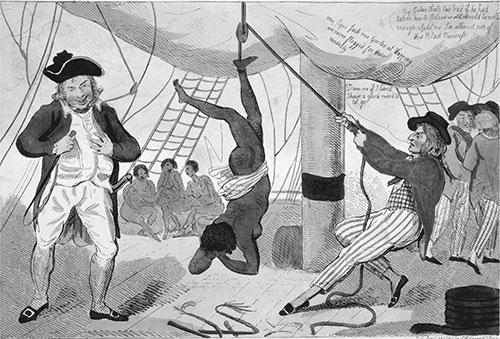
Slave traders came to America long before there was a United States. Library of Congress.
As early as 1772, Thomas Jefferson, James Madison and Patrick Henryslaveholders allhad sought to have the Virginia Assembly ban the importation of slaves into the American colonies. King George III, however, overruled them. Four years later, in his first draft of the Declaration of Independence, Jefferson included language prohibiting slavery. But he removed it with reluctance when representatives from South Carolina and Georgia warned that they would not sign the document unless he did so.
Since the United States did not gain its independence from Great Britain until the Treaty of Paris in 1783, the fledgling governments first successful attempt to grapple with the issue of slavery was the Northwest Ordinance, enacted on July 13, 1787. In Article 6, it states: There shall be neither slavery nor involuntary servitude in the said territory, otherwise than in the punishment of crimes whereof the party shall have been duly convicted. This, then, was the first fugitive slave regulation governing the Ohio Territory.
The U.S. Constitution, effective March 4, 1789, mirrored the sentiment of the Northwest Ordinance in Article IV, although the language makes no mention of slavery per se: No person held to service or labour in one state, under the laws thereof, escaping into another, shall, in consequence of any law or regulation therein, be discharged from such service or labor, but shall be delivered up on claim of the party to whom such service or labour may be due.
Next page
